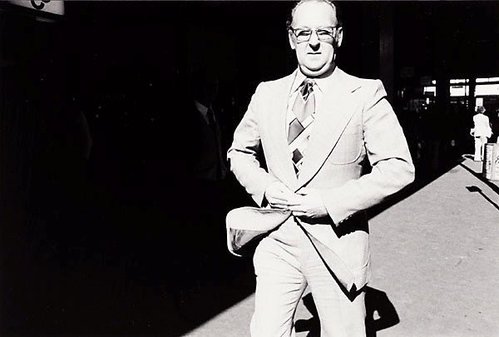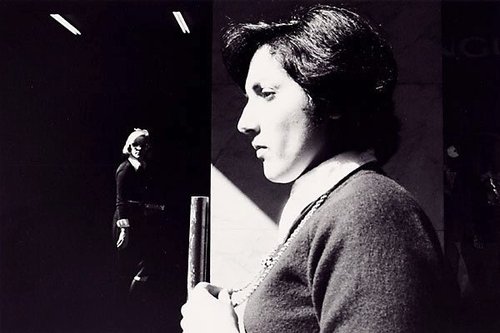-
Details
- Date
- 1991-1992
- Media category
- Photograph
- Materials used
- 2 gelatin silver photographs
- Dimensions
-
31.5 x 97.9 cm sight overall; 44.5 x 111.0 cm frame
:
1 - left, 31.5 x 49.1 cm, sight
2 - head right, 31.5 x 48.7 cm, sight
- Signature & date
Not signed. Not dated.
- Credit
- Purchased with funds provided by the JS Watkins Memorial Fund 1993
- Location
- Not on display
- Accession number
- 235.1993
- Copyright
- © Estate of Ingeborg Tyssen/Copyright Agency
- Artist information
-
Ingeborg Tyssen
Works in the collection
- Share
-
-
About
Ingeborg Tyssen arrived in Australia, from her native Holland, in 1957 as a 12 year old and the photographs she made throughout her career convey the sense of loss and dislocation she experienced as a young immigrant. A non-English speaking child, she found that she had to leave behind not only her language, but, as she put it in 1986 ‘the onomatopoeic nursery rhymes which initiated me, as a child, into the dark secrets of the European woods.’ Tyssen’s interest in photography emerged during travel undertaken in the 1970s, and on her return to Sydney she took a class with John F Williams. Influenced by his teaching, Tyssen began exhibiting her own photographs in 1975.
Tyssen’s work is distinguished by its particular intensity. Her earliest works were observational photographs of urban space that explored themes of isolation and dislocation. In particular she was preoccupied with sites of suburban pleasures like fun parks, pools and gardens and produced wry examinations of mundane scenes that implicate the comical and the poetic with the everyday. As critic Blair French noted in 2003, ‘the fascinating “strangeness” of vision in Tyssen's work suggests an authorial consciousness formed, in part, elsewhere and constantly seeking to rearticulate itself within a different world.’ Her oeuvre reflects on the difficulty of communication, while probing the expressive potential of photography as a site for critical engagement.
Tyssen's later works explore the relationship between European artefacts and the perception of our Australian cultural heritage. The broken artefacts in these works were found and photographed in Paris, highlighting the idea of the great European cities being a bastion of culture and a repository of cultural remnants.
The perceived notions of the 'civilised' Europe and the 'uncivilised' new country meant that until recently many Australians looked to Europe to find a cultural identity. Tyssen questions this need and her own position as a European migrant in Australia, and reflects upon the fragmentary and dislocated nature of memory, history and culture.
-
Exhibition history
Shown in 5 exhibitions
Ingeborg Tyssen - Twenty Years of Photography, Art Gallery of New South Wales, Sydney, 02 Mar 1995–09 Apr 1995
Points of view: Australian photography 1985-95, Art Gallery of New South Wales, Sydney, 19 Nov 2005–29 Jan 2006
Flatlands: photography and everyday space, Art Gallery of New South Wales, Sydney, 13 Sep 2012–03 Feb 2013
Flatlands: photography & everyday space, Art Gallery of New South Wales, Sydney, 15 Sep 2012–03 Feb 2013
Voices of Silence, Artspace, Woolloomooloo, 1993?–1993?
-
Bibliography
Referenced in 3 publications
-
Judy Annear, Points of view: Australian photography 1985-95, Sydney, 2005. no catalogue numbers
-
Anthony Bond and Victoria Lynn, AGNSW Collections, 'Contemporary Practice - Here, There, Everywhere ...', pg. 229-285, Sydney, 1994, 262 (illus.).
-
Isobel Johnston, Ingeborg Tyssen - Twenty years on photography, Sydney, 1995, 2 (illus.). cat.no. 88
-




